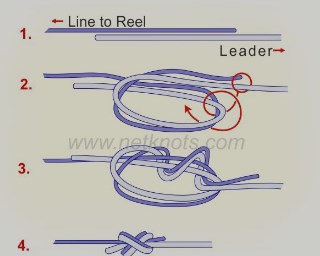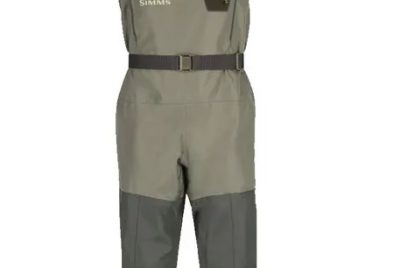Fly Fishing Fly Types
Introduction
Welcome to the fascinating world of fly fishing flies! As an avid angler and fly fishing enthusiast, I’m thrilled to guide you through the intricate world of fly patterns and their importance in successful fly fishing. Join me as we delve into the different types of flies, their characteristics, and when to use them for optimal results on the water.
The Basics of Fly Fishing Flies

Before we dive into specific fly types, let’s start with the basics. Fly fishing flies are artificial imitations of insects, baitfish, or other aquatic creatures that are used to attract fish. Each fly is carefully crafted to mimic the appearance and behavior of its natural counterpart, making it an irresistible temptation for hungry trout, bass, or other game fish.
Dry Flies
Dry flies are designed to float on the surface of the water, imitating insects that have hatched and are resting on the surface. These flies are perfect for targeting fish that are feeding on the surface, such as trout rising to take insects off the top of the water. Popular dry fly patterns include the Adams, Elk Hair Caddis, and Royal Wulff.
Wet Flies
Unlike dry flies, wet flies are designed to sink beneath the surface of the water, imitating insects that are submerged or in the process of emerging. Wet flies are versatile and can be used to target fish at various depths, making them a favorite among fly anglers. Effective wet fly patterns include the Woolly Bugger, Pheasant Tail Nymph, and Soft Hackle.
Nymphs

Nymphs are aquatic insect larvae that live underwater, making them a favorite food source for hungry trout and other fish. Nymph flies are designed to mimic the appearance and behavior of these underwater insects, making them highly effective in situations where fish are feeding below the surface. Essential nymph patterns include the Hare’s Ear, Prince Nymph, and Copper John.
Streamers
Streamers are large, bulky flies designed to imitate baitfish, leeches, and other larger prey items. These flies are typically fished with a fast, erratic retrieve to mimic the fleeing motion of injured prey, making them irresistible to predatory fish such as bass, pike, and trout. Top streamer patterns include the Woolly Bugger, Clouser Minnow, and Zonker.
Emergers
Emergers are flies designed to imitate insects that are in the process of hatching and emerging from their nymphal shucks. These flies are often fished just below the surface film, imitating the vulnerable stage of an insect’s life cycle when it is most susceptible to predation. Essential emerger patterns include the Parachute Adams, Blue Wing Olive, and Sparkle Dun.
Terrestrials

Terrestrial flies imitate land-dwelling insects such as ants, beetles, and grasshoppers that fall or are blown onto the water’s surface. These flies are highly effective in late summer and early fall when terrestrial insects are abundant and provide a tempting meal for hungry fish. Effective terrestrial patterns include the Ant, Beetle, and Hopper.
Choosing the Right Fly
Selecting the right fly for the job requires careful consideration of factors such as the time of year, water conditions, and the behavior of the fish. Matching the hatch – or selecting a fly that closely resembles the insects present in the water – is often key to success. However, don’t be afraid to experiment and try different patterns until you find what works best in a given situation.
Tying Your Own Flies
One of the most rewarding aspects of fly fishing is tying your own flies. Not only does fly tying allow you to create custom patterns tailored to your local fishing conditions, but it also provides a deeper understanding of insect behavior and fly design. Getting started with fly tying is easier than you might think, and there are plenty of resources available to help you master this enjoyable hobby.
Conclusion

In conclusion, understanding the different types of fly fishing flies and when to use them is essential for success on the water. Whether you’re targeting rising trout with dry flies or probing deep pools with nymphs and streamers, having the right fly at the right time can make all the difference. So, next time you hit the water, remember to pack a variety of flies and be prepared to adapt to changing conditions for a rewarding fly fishing experience.
FAQs
1. What is the difference between dry flies and wet flies?
Dry flies float on the surface of the water, imitating insects resting on the surface, while wet flies are designed to sink below the surface and imitate insects underwater.
2. How do I know which fly to use in different fishing conditions?
Matching the hatch and observing fish behavior can help you determine which fly to use. Experimentation and experience are also key to finding what works best in a given situation.
3. Can I use the same fly for different types of fish?
Many fly patterns are versatile and can be effective for multiple species of fish. However, it’s essential to consider the specific habits and preferences of the fish you’re targeting.
4. Are there specific patterns that work best for beginners?
Simple, versatile patterns such as the Woolly Bugger, Adams, and Pheasant Tail Nymph are great choices for beginners due to their effectiveness and ease of tying.
5. Is it necessary to match the hatch when fly fishing?
Matching the hatch can significantly increase your chances of success, especially when fish are actively feeding on specific insects. However, it’s not always necessary, and fish will often take a well-presented fly that doesn’t precisely match the hatch.




